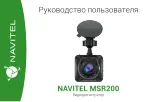
AW00158407000
Basler blaze-101 Getting Started Guide
Basler blaze-101
1
Basler blaze-101
GETTING STARTED GUIDE
Document Number: AW001584
Version: 07 Language: 000 (English)
Release Date: 3 December 2020
Basler AG
An der Strusbek 60–62
22926 Ahrensburg, Germany
All material in this document is subject to change without notice
and is copyright Basler AG.
Contacting Basler Support Worldwide
Europe, Middle East, Africa
The Americas
Basler AG
Basler Inc.
An der Strusbek 60–62
855 Springdale Drive, Suite 203
22926 Ahrensburg
Exton, PA 19341
Germany
USA
Tel. +49 4102 463 515
Tel. +1 610 280 0171
Fax +49 4102 463 599
Fax +1 610 280 7608
Asia-Pacific
Basler Asia Pte. Ltd.
35 Marsiling Industrial Estate Road 3
#05–06
Singapore 739257
Tel. +65 6367 1355
Fax +65 6367 1255
[email protected]
www.baslerweb.com
1 Introduction
The purpose of this guide is to familiarize you with the basic
capabilities of Basler blaze-101 camera and to provide some
important information that you should know before using your camera.
This
Getting Started Guide
does not include comprehensive
information about installing the camera or learning how to use it. his
information is available in the user documentation (see Chapter 7 of
this
Getting Started Guide
).
2 Precautions
For detailed technical information, go to
docs.baslerweb.com
.
WARNING
Electric Shock Hazard
Unapproved power supplies may cause electric shock.
Serious injury or death may occur.
You must use a camera power supply that meets the Safety Extra
Low Voltage (SELV) and Limited Power Source (LPS)
requirements.
WARNING
Fire Hazard
Unapproved power supplies may cause fire and burns.
You must use a camera power supply that meets the Limited Power
Source (LPS) requirements.
WARNING
Laser Safety Instructions
To avoid injuries, always follow these safety instructions:
Invisible laser radiation. The blaze-101 camera is a Class 1
laser product that is safe to use if used as intended. As it hasn't
been designed for operation in close proximity to living beings,
Basler recommends not looking directly into the beam and not
pointing the camera at humans or animals at close range (0.5 m
or less).
If operation at close range can’t be avoided, suitable eye
protection should be worn, e.g., the laservision
F22.P1H02.1001 or similar.
The camera contains no serviceable parts. Unauthorized
modification or operation in a fully or partially disassembled
state are prohibited.
The camera should be handled with care. Do not expose it to
environmental conditions outside the specifications. Do not drop
it, subject it to heavy mechanical shock, or expose it to extreme
temperatures, intense vibration, or humidity.
If there is reason to believe that safe operation is no longer
possible, put the camera out of operation and secure it against
unintended use. In particular, safe operation is no longer
possible in the following situations:
if the camera shows visible damage (especially to a diffusor
or the cover glass of the laser aperture)
if the camera no longer works as intended
WARNING
Don’t operate the camera when a diffusor shows signs of
damage.
If a diffusor is missing or damaged, the accessible emission can
exceed the safe limits of a Class 1 laser product.
In this case, safe operation is no longer possible. In particular, there
is a risk of thermally induced injury to the retina and the cornea of
the eye even during short-term exposure. Also, there is a possibility
of long-term effects on the lens of the eye (cataractogenesis).
WARNING
Don't operate the camera when the cover glass in front of the
laser aperture shows signs of damage.
If the glass is damaged, safe operation is no longer possible. In
particular, there is a risk of burns to the skin or the anterior parts of
the eye.





















